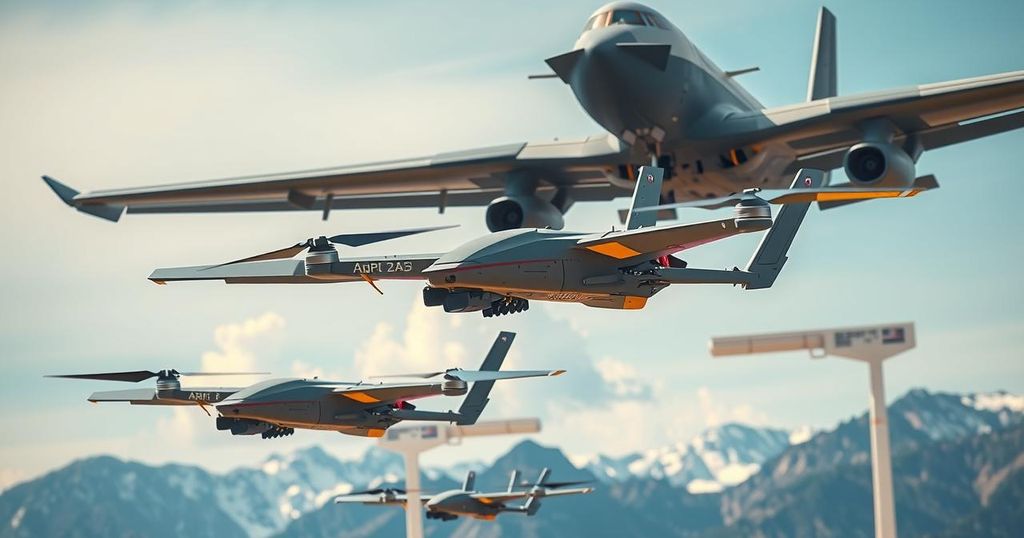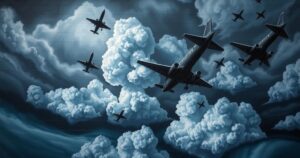Kim Jong Un Oversees Testing of AI-Equipped Suicide Drones in North Korea

Kim Jong Un supervised tests of North Korea’s first AI-equipped suicide drones, emphasizing the significance of AI in military modernization. The country also unveiled an early-warning aircraft, while collaboration with Russia continues to augment its defense capabilities. These advancements may impact regional security dynamics.
Recent reports from North Korean state media indicate that Kim Jong Un has overseen the testing of the country’s inaugural artificial intelligence (AI)-equipped suicide drones. During a demonstration, Kim emphasized the importance of prioritizing AI capabilities within the modernization of North Korea’s armed forces, as stated by the Korean Central News Agency (KCNA).
The suicide drones, or loitering munitions, are designed to hover until they identify a target, subsequently crashing into it with explosive payloads. This development coincides with the unveiling of a new airborne early-warning aircraft, which North Korea claims will enhance its air defense systems.
Photographs from state media featured Kim Jong Un approaching a large four-engine aircraft equipped with radar technology, as he observed its flight capabilities. Analysts had previously noted the ongoing adaptation of a Russian-sourced Il-76 cargo plane for this purpose.
According to a report from the International Institute for Strategic Studies, the introduction of an airborne early-warning (AEW) aircraft could improve monitoring of low-flying threats, particularly given the limitations posed by North Korea’s rugged terrain.
Additionally, reports indicate that Russia has provided North Korea with anti-air missiles and other military assets in exchange for troop support in Ukraine. Kim Jong Un also examined new developments in reconnaissance, electronic warfare, and attack systems, showcasing advancing drone technology in these areas.
In summary, Kim Jong Un’s recent oversight of military advancements, particularly in AI suicide drones and airborne early-warning systems, signals a strategic focus on modernizing North Korea’s military capabilities. The collaboration with Russia for military support further enhances North Korea’s defense strategy, particularly in reconnaissance and surveillance. As these developments unfold, they pose increasing implications for regional stability and security.
Original Source: www.abc.net.au







